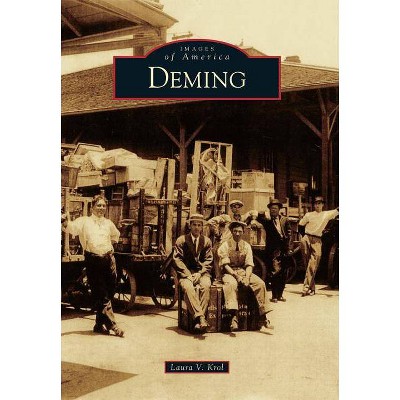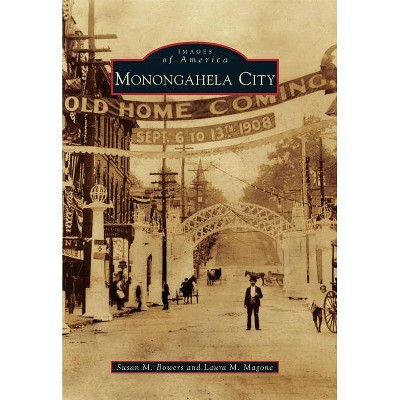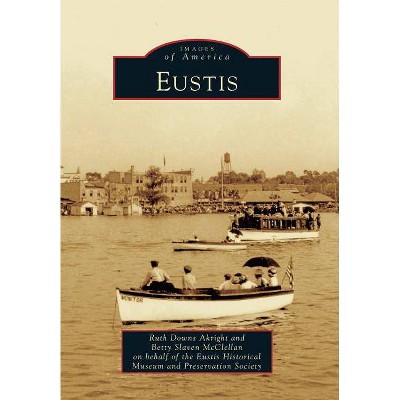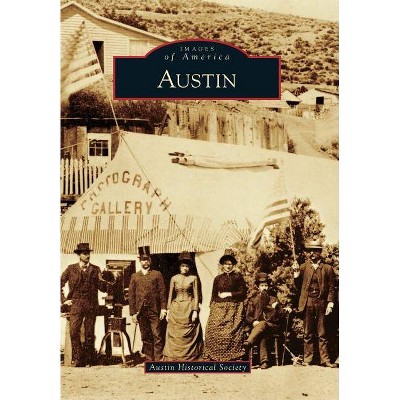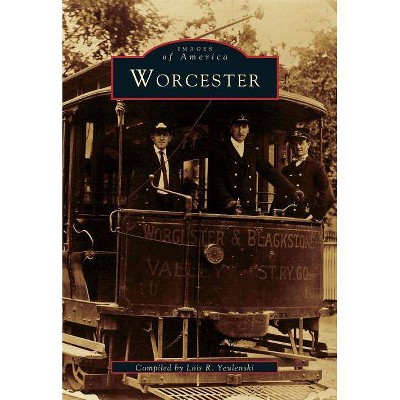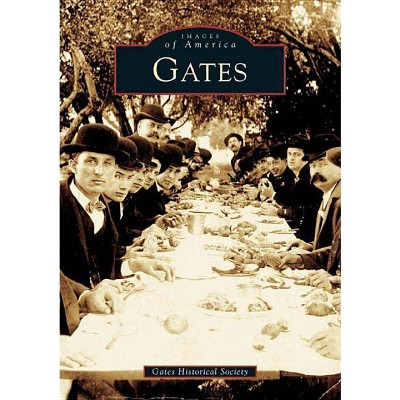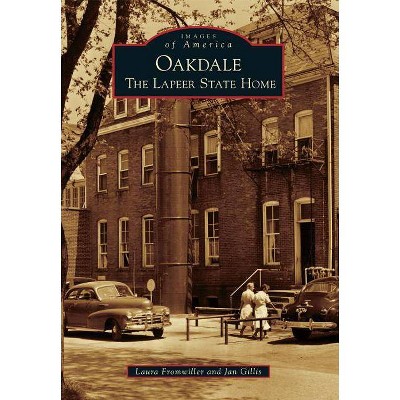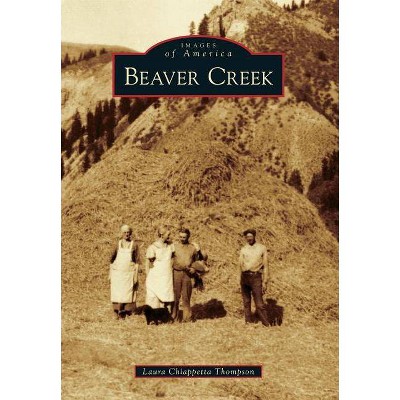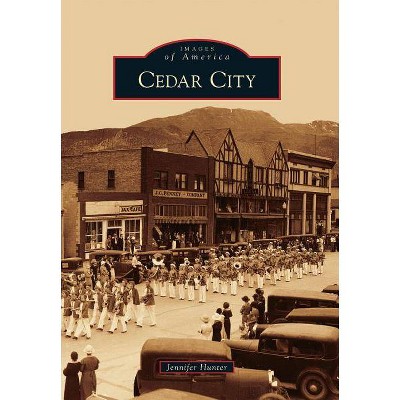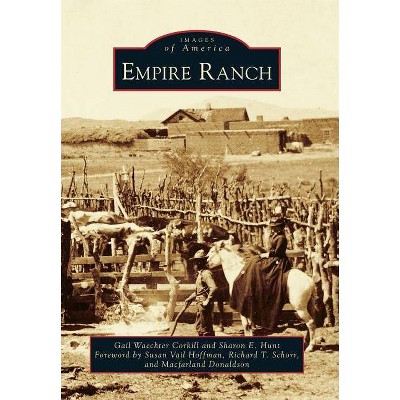Grove City - (Images of America (Arcadia Publishing)) by Janet Shailer & Laura Lanese (Paperback)
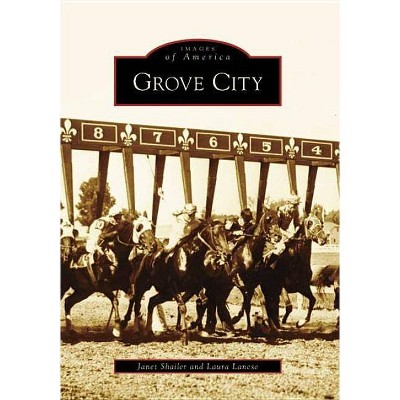
Similar Products
Products of same category from the store
AllProduct info
<p/><br></br><p><b> Book Synopsis </b></p></br></br>As part of the Northwest Territory, the land encompassing Grove City served as payment to war heroes Gen. Daniel Morgan and Col. William Washington, a distant relative of George Washington, for their Revolutionary War service. They in turn sold this land, and in 1803, the region s first pioneers, Hugh Grant and his wife, Catherine Barr, settled close to what is now downtown Grove City. In 1852, Grove City founder William F. Breck laid out the town plat and helped incorporate the village in 1856. Grove City remained a small farming village throughout the 19th and much of the 20th century, despite its proximity to the fast-growing capital city of Columbus. While the beginning of the 21st century has brought dramatic growth, Grove City continues to hold on to its vibrant, small-town character through its Roaring Twenties era Thoroughbred racetrack, its picturesque town center, and the numerous educational activities hosted by the Southwest Franklin County Historical Society."<p/><br></br><p><b> Review Quotes </b></p></br></br><br>Publication: Columbus Local News <BR>Article Title: Women document Grove City history <BR>Author: Kristin Campbell <BR>Date: 11/12/2008 <P><BR>After more than 150 years, Grove City has accumulated plenty of history, and two local writers have taken on the task of cataloguing some of that history in narrative form. <P><BR>Janet Shailer and Laura Lanese, co-authors of Images of America: Grove City, detail Grove City's history, from its days as part of the Northwest Territory, through its use as land grants for Revolutionary War soldiers, and on into modern life in the city. <P><BR>The book goes beyond the brick and mortar of the city's historic buildings to give readers a peek into what life was like for the many generations of living, breathing people who inhabited this space in the decades that have gone before, the women said. <P><BR>Both women share a deep interest in history, particularly of the Grove City area. <BR>Shailer is a lifelong resident of Grove City who can trace her family's connection to the area back to the 19th century. <P><BR>"My mother's family has lived here since 1848," she said. "Both of my parents graduated from Grove City High School as did all my aunts and uncles, my brother and sister, and most of my cousins." <P><BR>Grove City is home to Shailer in every sense of the word. She is the author of The Dutch Pike Trilogy, a collection of children's stories based in Grove City. <P><BR>Shailer has worked in broadcasting and print journalism for most of the past 35 years, and is now working on another children's book. <P><BR>Lanese moved to Grove City as an adult, but said she has formed a strong connection to Grove City and its history. <P><BR>"It's hard not todrive through the downtown historic area or by the beautiful old churches such as St. John's and not wonder about their previous lives," she said. <P><BR>Lanese is a former U.S. Justice Department attorney and the author of Game of My Life, Ohio State: Memorable Stories of Buckeye Football. She is currently working on another book in the same Arcadia Publishing series as the book she and Shailer wrote about Grove City. This book will focus on her hometown of Wilmington, Oh. <P><BR>Shailer and Lanese had a scant three months to do the research, write the book and submit it to their publishing house. <P><BR>Along the way, they came across countless stories of hardship in the early days. <P><BR>"I think most of us understand how hard life was for pioneers, but it's not until you read the details of every day life that you begin to appreciate how easy and comfortable our lives are today," Lanese said. <P><BR>"For example, Grove City's first pioneer was Hugh Grant, who owned a business in Pittsburgh. When he had excess goods to sell, he would sail down the Mississippi River to sell them and then walk the entire distance back home. <P><BR>"On one of these trips, he must have stopped in what is now Grove City and liked what he saw, so he brought his wife here on an ox with all the goods they could carry and started completely fresh here without knowing a soul, because the only ones in the area would have been Native Americans." <P><BR>She said Grant's house still stands in Grove City today. <P><BR>Lanese and Shailer worked as a team, each writing five of the book's 10 chapters and working together to contact local residents sift through mountains of historical information and edit the bookbefore their deadline. <P><BR>They both say the working relationship was wonderful, and Shailer attributes it to the shared goal of leaving something of value for those who come after: <P><BR>"We both felt it is important to follow the Southwest Franklin County Historical Society's motto of 'Preserving the past for the future, '" she said. <P><BR>Shailer and Lanese held a book signing Tuesday evening at a meeting of the Southwest Franklin County Historical Society, and will participate in another signing from 5: 30 to 7: 30 p.m. Nov. 20 at the Columbus Historical Society, 51 Jefferson Ave. in Columbus. <P><BR>They will be joined by other writers who have authored books about Central Ohio history. <P><BR>Images of America: Grove City is available at local businesses including Village Merchant, Nora's, Sommer House Gallery and Home Country Moods. It is also available online at the Barnes and Noble, Amazon and Arcadia Publishing websites, as well as in local bookstores. <P><BR>"It's not until you read the details of (past) every day life that you begin to appreciate how easy and comfortable our lives are today." <BR><br><br>Publication: Columbus Messenger <BR>Article Title: GC author tackles history in new book <BR>Author: Linda Dillman <BR>Date: 10/04/08 <BR>Grove City is growing, but recalling its historic past was not an easy task if you only had time to look in one place. <P><BR>Although the Grove City library is a local repository for documents, photos, and memorabilia, author and native daughter Janet Shailer said no one had written a comprehensive history of Grove City...that is, not until now. <P><BR>Shailer, whose German ancestors immigrated to the area in 1848, is the author of "Dutch Pike Trilogy," a children's book on local history, and a former newspaper editor, along with Laura Lanese, a former Justice Department attorney who moved to Grove City in 1999 from the Washington, D.C. area and co-authored "Game of my Life, Ohio State: Memorable Stories of Buckeye Football," recently collaborated on "Images of America: Grove City." <P><BR>The book, along with a companion postcard packet, will debut Oct. 6 at local retailers, online bookstores, and through Arcadia Publishing. The 128-page publication is filled with chapters on early settlers, immigration, farm and religious life, transportation, schools, community, commerce, and racetracks, along with hundreds of black and white photos. <P><BR>"It was a challenge," said Shailer. "The company asked us in February if we could have the book done in 12 weeks. We started our research in the Grove City library in the reference department where the Southwest Franklin County Historical Society has a photo archive area, which started in 2002 with an Attics to Archives project. We tried to document everything as best we could and double check our facts as muchas possible. <P><BR>"We decided to focus on an early time period from around 1803 to 1952. Laura and I started working and combing through the archives. Then Laura went to the Ohio Historical Society and dug through their archives. I started calling the old families of Grove City, people who are now in their 80s and 90s, who are descendants of the original pioneers. They were very generous and had old photos they shared with me." <P><BR>The authors said every American town has a story to tell and Grove City is no exception. In 1848 Grove City was a stagecoach stop along the Harrisburg-Columbus Turnpike and the area was part of a land grant given in payment for services by Revolutionary War veterans. The town was first platted in 1852 and settled primarily by people from Pennsylvania, Maryland, and New York, as well as Europe-especially Germany. <P><BR>"Planks is the oldest continually operating business in Jackson Township," reported Shailer. "You can still go in there and buy a couple of things - like a Braunschweiger sandwich - that you could get in the 1800s when Broadway was a stagecoach route. <P><BR>"And even though Grove City was such an agricultural community, there was also a rich social life. Farmers and their families would come in to town on the weekends. The farmers would conduct business, the women would socialize, and the kids would run around. They set up fraternal organizations and started business groups and my grandmother talked about how they used to roll back the carpets, invite musicians in, and have dances in her own home. <P><BR>"There was a lot of music in the town and people were able to entertain themselves." <BR>Grove City's first library started in 1891 whenresidents combined their own book collections at a central location - Harsh's Drug Store. The library was later moved to a building at Broadway and Civic Place by the town's Women's Civic Club. <P><BR>"Images of America: Grove City" highlights also include a history of the Gantz farm; information on St. John's Lutheran Church, which was founded in 1849 and is one of the largest Lutheran churches in central Ohio; photos of Ohio's first thoroughbred track and the old greyhound track in operation during the Roaring 20s, and elaborate artwork on German Taufscheins. <P><BR>Copies of the book will be available at Meet the Author book signing events on Oct. 11 and 18, 8 a.m.-noon, at the downtown Grove City Harvest Market and on Oct. 25, 1-3 p.m., at the Borders bookstore, 6670 Sawmill Road. <BR><br><br>Publication: This Week News <BR>Article Title: Authors of local history book found some surprises <BR>Author: Kevin Parks <BR>Date: 10/15/08 <P><BR>The co-authors of a new book on the history of Grove City both encountered some revelations in their research, although one has lived here all her life and the other, a nine-year resident, is viewed by natives as a newcomer. <BR>"Images of America: Grove City" by Janet Shailer and Laura Lanese is the newest local history tome from Arcadia Publishing of Mount Pleasant, S.C. <BR>"With more than 3,000 titles in print and hundreds of new titles released every year, Arcadia has extensive specialized experience chronicling the history of communities and celebrating America's hidden stories, bringing to life the people, places and events of the past," according to the back page of the Grove City volume. <BR>Charged with bringing the past to life for people living in the present as well as preserving it for future generations were Shailer, a Grove City native who can trace her mother's side of the family roots in the community back to 1848, and Lanese, a lawyer by trade and already co-author of another book, "Game of My Life," about Ohio State University football. <BR>Her husband, Mike Lanese, played wide receiver for the Buckeyes from 1982-85. <BR>Shailer, a one-time high school correspondent for The Record and former editor of the rival Southwest Messenger, said that one of the things she kept thinking about during her research was just how much fun it would have been to live in Grove City in, say, 1926. <BR>Beulah Park had just begun offering thoroughbred racing three years earlier and the dog track, which would provide Grove City High Schoolsports teams with a nickname and which was shortly shut down by state officials, had just opened. The Interurban streetcar line was running to Columbus and farm families came flooding into town on Saturday nights. <BR>"That particular year you had thousands of people coming to Grove City on a daily basis," Shailer said. "You had all kinds of things going on here in Grove City, a little village at the time. <BR>"How exciting that must have been for them." <BR>Laura Lanese, who said all lawyers are fascinated by history - perhaps it's that reliance on precedents - was initially intrigued to find out why so many of the city's streets have the names they do. <BR>Early settlers and pioneering families provided some of the names while others, Stringtown Road, for example, come from local quirks. The members of a music group lived along what was once a dirt road, according to Lanese. <BR>"What really struck me was how important location was A, how it developed based on its location," Lanese said. <BR>This was true when a path hacked from felled trees led the first settlers to what would become Grove City, it was even more significant when Harrisburg Pike was created and is still even more the case as a result of Interstate 71 and the Outerbelt, Lanese pointed out. <BR>The two women said they enjoyed their collaboration, with each taking five of the 10 chapter headings. <BR>"It was very smooth," Lanese commented. <BR>"Laura was the ideal partner to do this with," Shailer said. <BR>"I think we were kind of lucky in finding each other a couple of years ago," she added. "We did this project because we really love Grove City, not to be trite. I think it was kind of a needed thing." <BR>"It reallyis a gift for this community," Lanese said. <BR>"Image of America: Grove City" includes 217 historic photos out of a collection at the Grove City Library that has grown to nearly 1,000 scanned images, a collection that has grown in part due to Shailer and Lanese encouraging people to participate in the "Attic to the Archives" project. <BR>The book costs $19.95 plus tax and a packet of historic postcards is also available for $7.99. These will be available from several Town Center Merchants, at the Harvest Market downtown on Oct. 18, online through Amazon.com and at the Barnes and Noble Bookstore in the Lennox Town Center. <BR>In addition, the two authors will be doing a book signing at the Borders Store, 6670 Sawmill Road, on Oct. 25 from 1 to 3 p.m. <BR><br>
Price History
Price Archive shows prices from various stores, lets you see history and find the cheapest. There is no actual sale on the website. For all support, inquiry and suggestion messagescommunication@pricearchive.us
